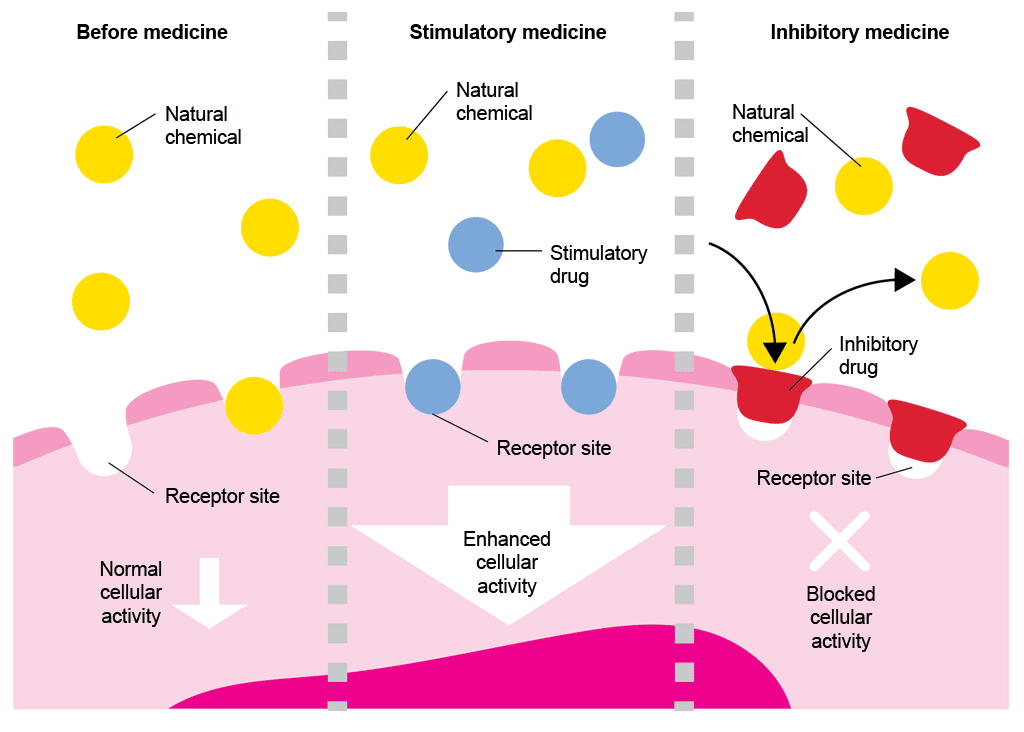Last update: 23 June 2015
After medicines are taken/given, the active ingredient of the medicine enters the circulation and is carried in the blood to the intended target. Once the medicine has reached the part of the body where it is needed, it will interact with the local cells to produce the desired effects.
Most medicinal compounds are recognised by a specific type of cell and will either act on the cell surface or will be taken inside the cell. This occurs because the cells in our bodies have molecules on the surface called receptors. Medicines attach to their target receptors, much like a key fits into a lock, and this triggers a response in the cell, resulting in the turning on (stimulation) or turning off (inhibition) of an effect (see figure below). In this way, stimulation and inhibition affect cellular activity.
- The different effects of stimulatory and inhibitory medicines on receptor sites and cellular activity are shown here, representing the target-receptor mechanism of action.
Stimulation
Some medicines work in the same way as molecules naturally occurring in the body, for example, morphine and similar compounds mimic the actions of endorphins (chemicals produced naturally in the body to reduce pain). Morphine can reduce pain by binding to the same receptors as endorphins.
Inhibition
Other medicines work by blocking the receptors on cells, so that naturally occurring molecules cannot exert their normal effect. An example of this is the family of drugs called beta-blockers, which are used to treat heart conditions and other illnesses. When a patient at risk of high blood pressure or a heart attack takes a beta blocker, the medicine binds to beta receptors and blocks them, meaning that the naturally occurring molecules (adrenaline and noradrenaline) cannot reach the receptors and overstimulate the heart.
Medicines that are very specific to one receptor often have a better side-effect profile than medicines that are less specific. Even for very specific medicines, binding to the receptor is temporary and, after a while, the medicine will let go of the receptor and leave the body.
A2-1.06.2-V1.1



